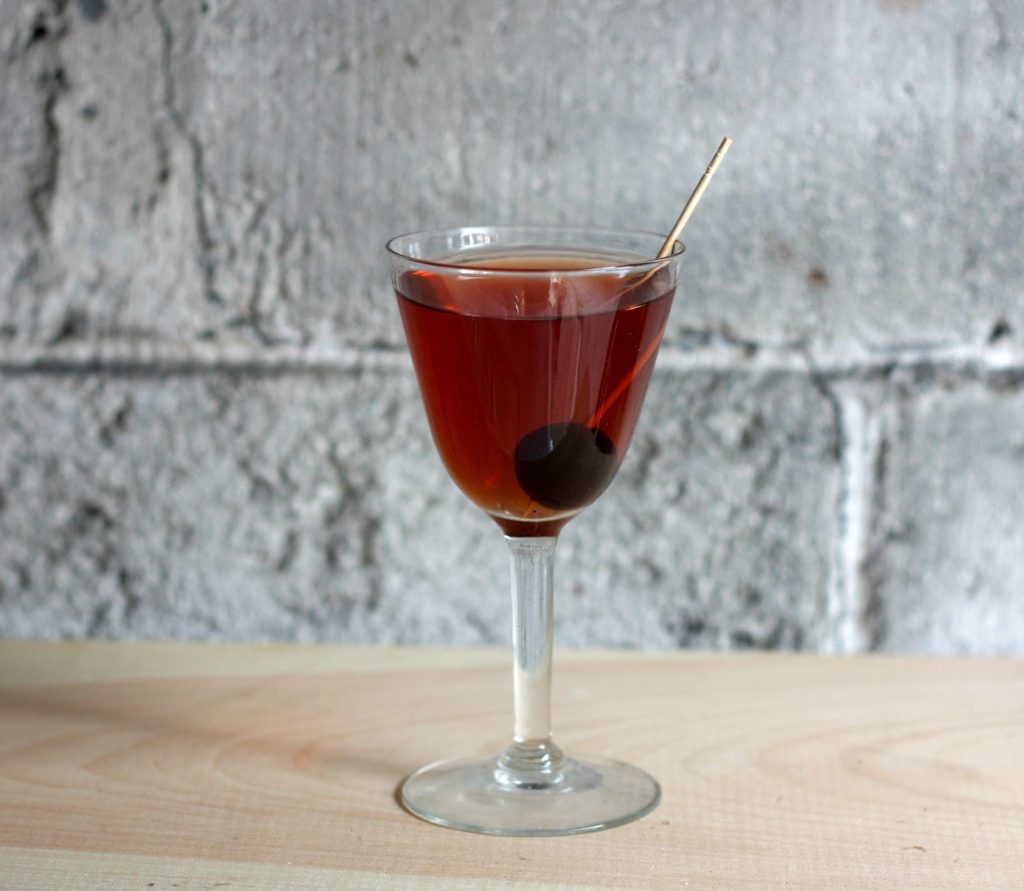It’s been a weird week, hasn’t it? No matter what your politics, I think we can all agree that we deserve a drink after this election. And when the rest of the world seems a little off-kilter, there’s nothing better than a classic cocktail to remind you how little a lot of things have changed.
The Brooklyn is, admittedly, not one of the most widespread classics. Its close cousin the Manhattan always steals the spotlight. I’d argue that there’s a reason for this; I personally prefer the Manhattan with its sweet vermouth to the lighter Brooklyn. But the Brooklyn has inspired a number of spinoff cocktails that I really enjoy, most named after Brooklyn neighborhoods: the Red Hook, Greenpoint, Slope, Prospect Park, and many others. So it seemed like high time that I made one.
One reason I’ve avoided the Brooklyn until now is because it technically calls for an ingredient I don’t have, a bitter orange liqueur from France called Amer Picon. It was invented in 1837 by Gaétan Picon, a distiller-turned-soldier who mixed up the quinine-laced bitters to cure the malaria he contracted while stationed in Algeria. It seemed to work, and the French army asked him to stay in Algeria and continue to produce it for the troops there. He opened multiple distilleries in the country, and when his “Amer Africain” won a major competition in London, he moved to Marseilles and began making the bitters under the name Amer Picon. They found their way into a number of turn-of-the-century cocktails, including the Brooklyn.
Unfortunately, the Picon company was sold around the 1970’s, and the recipe for Amer Picon was changed and diluted (so much for nothing really changing). Besides a few precious bottles hoarded away by collectors, it’s now impossible to taste the original formula. Even the altered version is not available for purchase in the United States. So you can’t really make a “real” Brooklyn anymore. You can get around this problem by making your own Amer Picon substitute or just subbing in Angostura and orange bitters. I did the latter, including two dashes of each.
The Brooklyn is surprisingly light in flavor due to the dry vermouth. With the ingredients I used, it has almost a nutty flavor, with strong hints of cherry and vanilla. There was a lot of spice on the finish. It’s a pleasant cocktail, but all in all it’s not my favorite of the Manhattan family. I feel like it’s crying out for sweet vermouth. But I’m still quite happy that I finally tried it. I’d like to replace the Amer Picon with some different amari and see how that improves things.
History: As I mentioned in my post on the Greenpoint, there are five cocktails that were created in the early twentieth century that were named after New York City’s five boroughs: the Manhattan (rye, sweet vermouth, bitters), the Bronx (rye, sweet vermouth, dry vermouth, orange juice), the Brooklyn (rye, dry vermouth, maraschino liqueur, Amer Picon), the Queens (gin, dry vermouth, sweet vermouth, pineapple juice) and the Staten Island Ferry (rum, pineapple juice). It seems that the Manhattan came first and sparked a trend. Not to be left behind, Brooklyn bartenders began serving up a number of different cocktails named after their neighborhood.
The Brooklyn we know and love today was one of the earliest of these to appear on the scene. It popped up in J.A. Grohusko’s Jack’s Manual in 1908. It didn’t really catch on at first (one could argue that it never really caught on, not the way the Manhattan or even the Bronx did), but it was included in Jacques Straub’s 1913 Manual of Mixed Drinks and the famous Savoy Cocktail Book in 1930. Still, bartenders continued to invent their own Brooklyns, either ignorant of this one’s existence or unsatisfied with it. Though the recipe flew under the radar until very recently, it did survive, and now it has a number of descendants created during the recent craft cocktail renaissance.
For much more on the Brooklyn’s history, check out this article from Edible Brooklyn.
Brooklyn
2 oz. rye whiskey
1 oz. dry vermouth
1/4 oz. maraschino liqueur
1/4 oz. Amer Picon or a few dashes Angostura or orange bitters (I used two dashes of each)
Combine all ingredients in a mixing glass with ice and stir until chilled. Strain into a Nick & Nora glass and garnish with a brandied cherry.
Recipe adapted from Serious Eats. The history of Amer Picon came from Punch.






